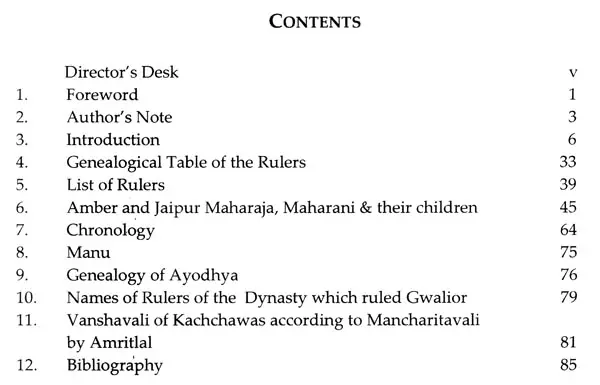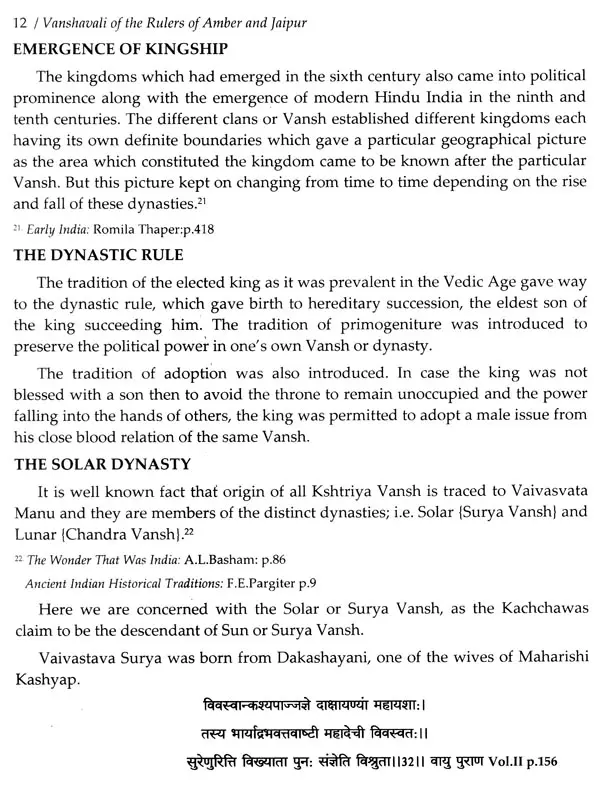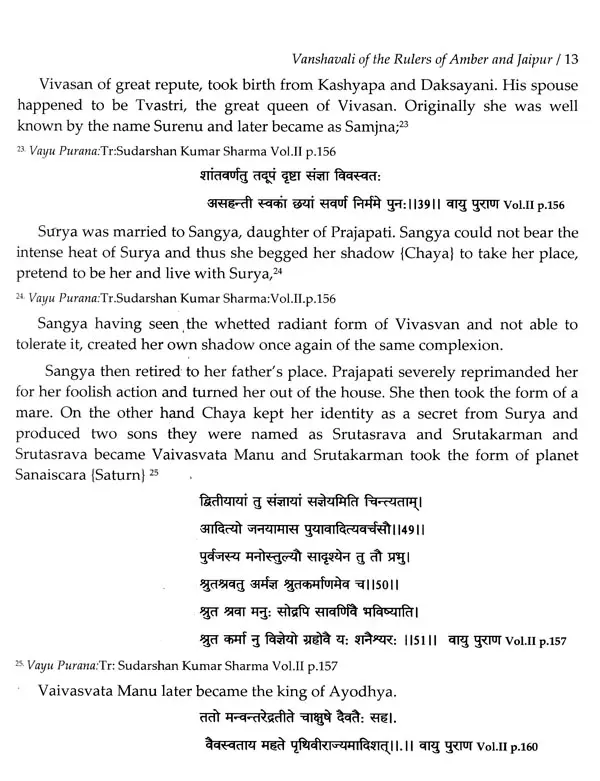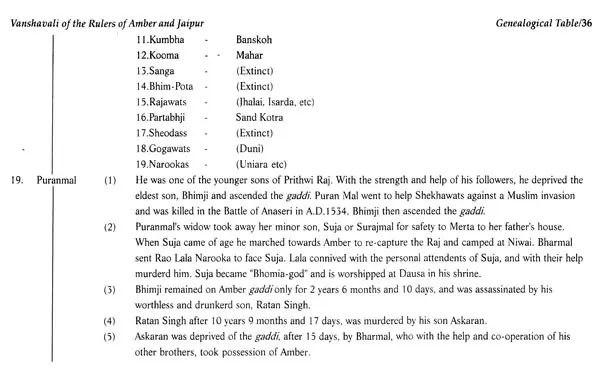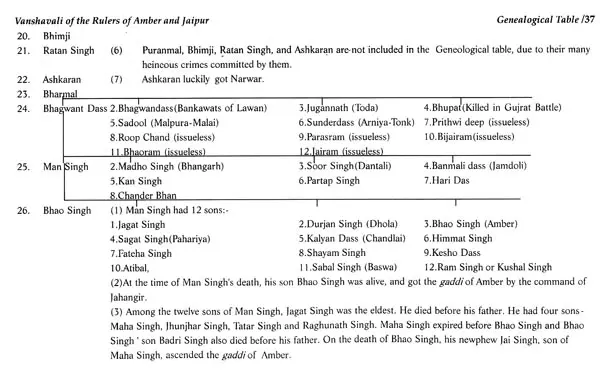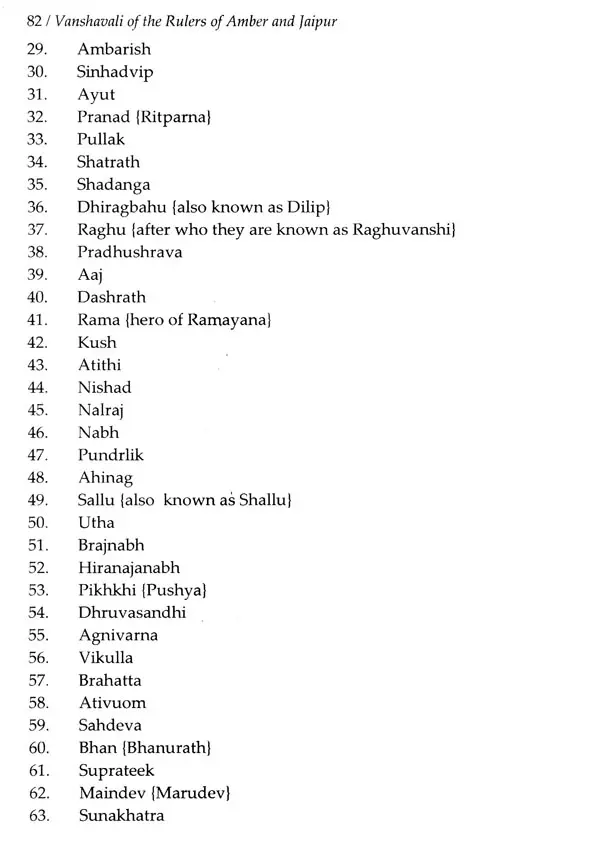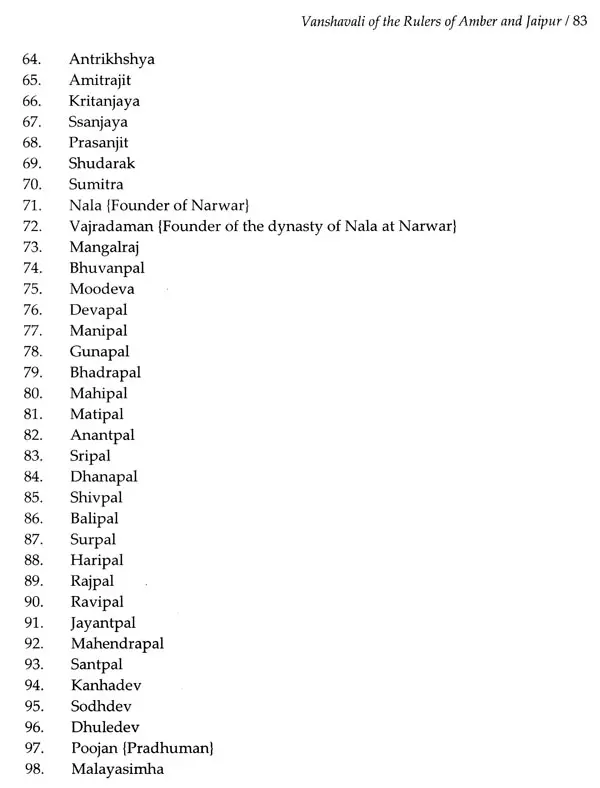
Vanshavali- Genealogy of the Rulers of Amber and Jaipur
Book Specification
| Item Code: | UAD286 |
| Author: | Ranbir Sinh |
| Publisher: | Literary Circle, Jaipur |
| Language: | Sanskrit and English |
| Edition: | 2020 |
| ISBN: | 9789385445316 |
| Pages: | 96 |
| Cover: | HARDCOVER |
| Other Details | 10.00 X 7.50 inch |
| Weight | 340 gm |
Book Description
Ranbir Sinh, using a variety of sources, including modern histories, brings such puzzle to our attention. An example is the disputes surrounding the names of some Rajput lineages, such as the origin and references of the vansh titles Kurume and Kachchawa, which remains obscure.
Ranbir Sinh has authored multiple books on varied themes :- History of Shekhawats. Wajid Ali Shah: The Tragic King. Ranthambhor: The Impregnable Fort. Mauritius: The Key to Indian Ocean. Historicity in the Sanskrit Dramas. The Two Sieges of Bharatpur. Parsi Theatre.
He has written 15 full length plays and a dozen short plays. He has also adapted plays of Sophocles, Shakespeare, Moliere, Goldoni and Brecht. He has contributed several articles on Indian Theatre in various journals. He also worked on The Life and Work of Ibsen, Moliere, Pirandello, and Eugene Oneill.
Ranbir Sinh provides an extensive introduction to the tables. In it he examines selected problems in the historical record relevant to the Kachchawa rulers. He also discusses the social context in which Hindu families valued and preserved Vanshavali. The territories colonized by a particular vansh became the early kingdoms. The clans claimed descent from Solar, Lunar and Fire dynasties.
Knowledge of origin legends was sustained by the Bhats and Badwas, the traditional keepers and recites of such legends. Classical texts such as Puranas, Manuscript and Ramayana often reinforce evidence provided by inscriptions and local poems concerning genealogies’ puzzles. Ranbir Sinh, using a variety of sources, including modem histories, brings such puzzle to our attention. An example is the disputes surrounding the names of some Rajput lineages, such as the origin and references of the vansh titles Kurume and Kachchawa, which remains obscure.
Readers will be stimulated to follow up questions raised in the introduction, and to utilize the genealogical and events tables as the take-off point for further research and analysis of the Kachchawa kingdoms of Amber and Jaipur.
1. SUTA: keeper of the old traditions
2. Vayu Purana: Tr: Sudarshan Kumar Sharma:VoL.I p.4
TRADITION
Pargiter attaches a lot of importance to the vanshavalis {genealogies}.
According to him the "genealogies were not accepted blindly but were scrutinized in their order to ascertain the true or most trustworthy version.'? He further says, that, "The genealogies of the ancient dynasties are the chief data of an historical kind, and the investigation of traditional history and begin with them."!
3-Ancient Indian Historical Tradition: F.E.Pargiter.p.28
4Ancient Indian Historical Tradition: F .E.Pargiter; p.77
Vanshavali was and still is a matter of pride for every Hindu family. It was not that the Vanshavali of the Rishis and Rajas only were recorded and preserved but of all castes. According to C.V.Vaidya, even the Shudras, had their own Bhats, who at the time of marriages and other social functions used to recite the Vanshavali of the family."
5. History of Mediaeval Hindu India: C.V.Vaidya: Vol. 1 p.262
The responsibility of the Sutas, in the later times, was taken over by the Charans who kept the Vanshavali of the Kshatriya Kings. Not only that but they recorded the history of that time in prose and poem known as Khyat, Vachanika etc. This indeed is the greatest contribution of the Charans that the Vanshavalis of the various dynasties have been preserved, and also recorded history, which provides the source material and it is almost impossible to write the history of the various dynasties without taking it into consideration.
The Bhats or the Badwas showed their allegiance to a particular caste or family, and accordance to the Jajmani system they were provided land and money for their sustenance.
The ancient tradition also made it compulsory for every Hindu individual to recite the names of at least four generations while performing puja at marriage, death, and other religious functions. This made it possible for every Hindu family to know their ancestors.
Another interesting and unique tradition which was introduced and made almost compulsory was to record the names of one's ancestors in the record books {Bahi} meticulously kept by the priests at Hardwar, Puri and other religious centers. It became a solemn duty of an individual that he should complete the details from the point as recorded by the earlier member of the family. It is of interest to know that these records do have the sanctity and legal status in family matters and property disputes. This practice is religiously followed by every Hindu family even today.
Book's Contents and Sample Pages
